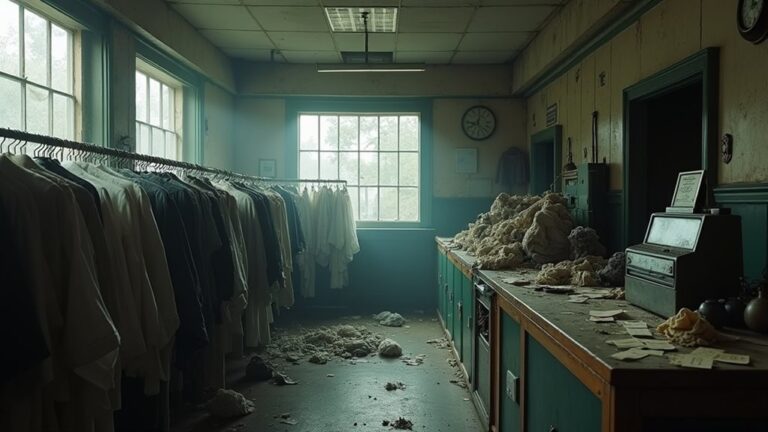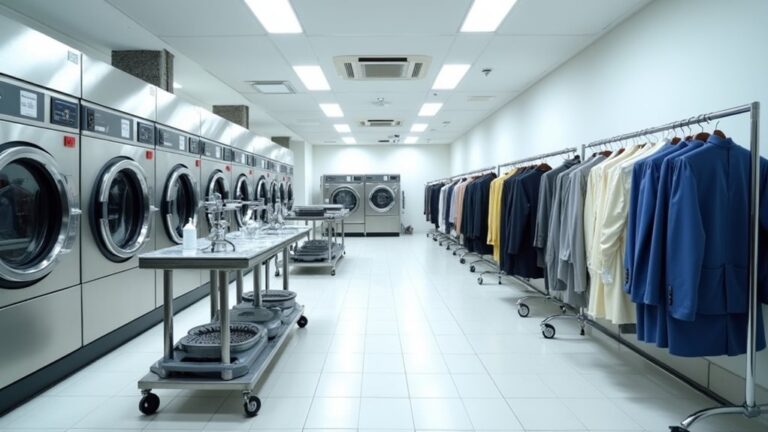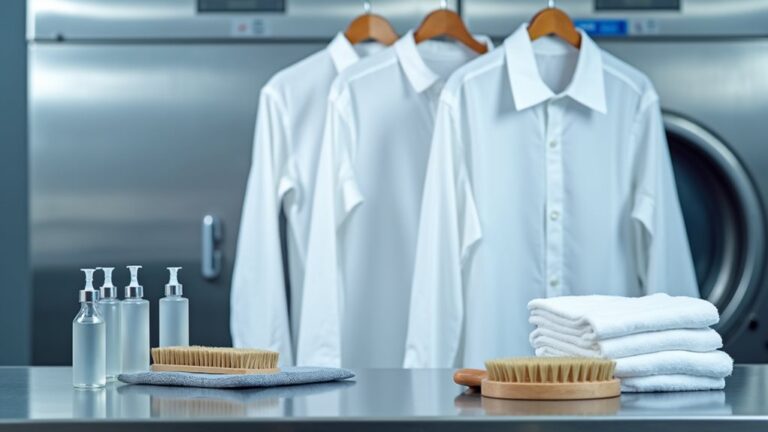Dry cleaning’s surprisingly ancient roots trace back over 2,000 years to clever Romans who used powdered chemicals and absorbent clay on their finest garments, long before you’d think such sophistication existed. The modern version began when Jean Baptiste Jolly accidentally spilled kerosene on fabric in the 1800s, discovering it cleaned better than water, while Thomas Jennings earned the first U.S. patent in 1821. There’s quite an odyssey from those early innovations to today’s eco-friendly alternatives.
Ancient Origins and Early Cleaning Methods
While most of us think dry cleaning is a relatively modern invention, you’d be amazed to discover that our ancestors were actually tackling stubborn stains and preserving precious fabrics thousands of years ago.
The ancient origins of this cleaning method stretch back to Rome, where clever citizens developed techniques using powdered chemicals and absorbent clay – basically creating the world’s first eco-friendly stain fighters!
Romans pioneered eco-friendly stain removal with powdered chemicals and absorbent clay – proving ancient innovation rivals modern convenience!
Picture this: Romans in Pompeii had actual dry cleaning shops before Mount Vesuvius decided to crash their party in 79 AD.
These entrepreneurial ancients understood that water wasn’t always the answer, especially when dealing with delicate fabrics or oil-based messes.
Their innovative approach proves that necessity truly is the mother of invention, and honestly, it makes our modern convenience seem less revolutionary! 😊
The Accidental Discovery by Jean Baptiste Jolly
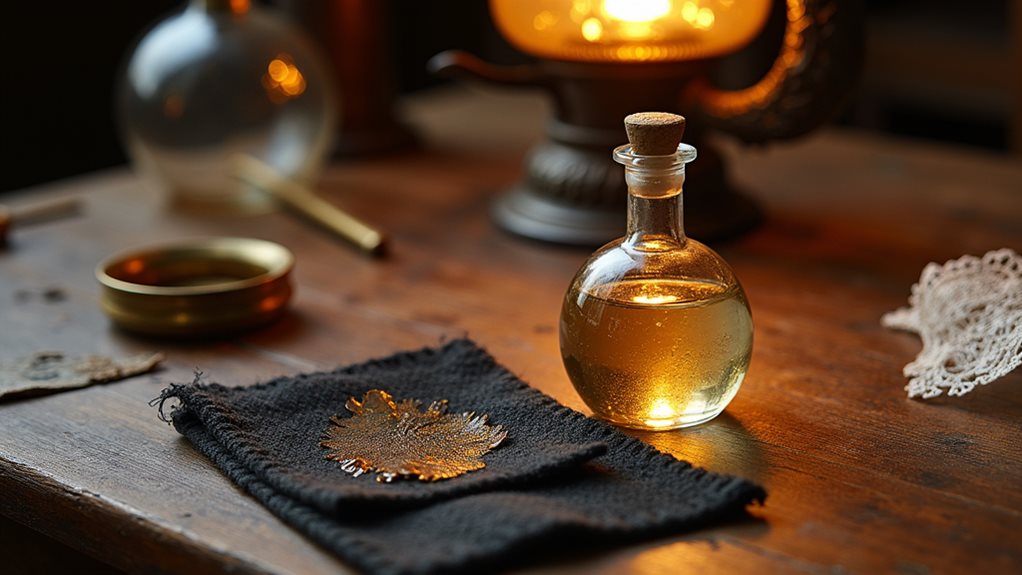
You’ve probably spilled something on your clothes and wished you could magically make the stain disappear, but imagine if that accident actually changed the world forever – that’s exactly what happened to Jean Baptiste Jolly in the early 1800s.
When he accidentally knocked over a kerosene lamp onto his tablecloth, instead of throwing a fit about the mess, this curious Frenchman noticed something incredible: the fabric looked cleaner where the kerosene had touched it.
This happy accident sparked his brilliant mind to experiment with different solvents, eventually leading him to open the first dry cleaning shop in Paris and basically invent an entire industry that we still rely on today. 😊
Jolly’s discovery in 1855 revolutionized garment care by proving that liquid solvents could effectively remove stains without the water damage that traditional washing methods caused to delicate fabrics.
The Kerosene Spill Incident
Sometimes the most revolutionary discoveries happen when we least expect them, and Jean Baptiste Jolly’s accidental encounter with kerosene in the early 1800s perfectly illustrates this beautiful chaos of innovation.
Envision this: you’re going about your daily routine when suddenly you spill something that completely changes your perspective on cleaning. That’s exactly what happened when Jolly accidentally knocked over a kerosene lamp onto his tablecloth, creating what seemed like a disaster but turned into brilliance.
Instead of panicking about the mess, he noticed something remarkable – the kerosene actually removed stains more effectively than water ever could. This happy accident led him to experiment further, ultimately coining the term “dry cleaning” and revolutionizing how we approach fabric care forever.
From Accident to Innovation
Although Jean Baptiste Jolly couldn’t have predicted that his clumsy moment would launch an entire industry, his response to that kerosene spill reveals something profound about the innovative mindset.
You see, most of us would’ve cursed our clumsiness and moved on, but Jolly recognized opportunity disguised as accident. Instead of dismissing what happened, he leaned into curiosity, experimenting with different solvents to understand why kerosene cleaned without water damage.
This experimentation led him to establish Teinturerie Jolly Belin in Paris by 1845, coining the term “dry cleaning” and revolutionizing garment care forever.
His innovation didn’t just solve a cleaning problem—it protected delicate fabrics that water would destroy, proving that sometimes our biggest breakthroughs emerge from our most unexpected moments.
The process earned the name “dry” cleaning because it uses chemical solvents instead of water, distinguishing it from traditional water-based washing methods.
Paris Shop Establishment
Vision, determination, and a splash of entrepreneurial spirit transformed Jolly’s accidental discovery into something tangible when he opened Teinturerie Jolly Belin in Paris in 1845.
You’ve got to admire his courage—imagine explaining to investors that you’re betting your future on spilled kerosene! 😄
This wasn’t just any cleaning shop; it was the world’s first modern dry cleaning establishment, where Jolly’s revolutionary cleaning techniques using kerosene and gasoline solvents could finally serve the public.
The bustling streets of Paris provided the perfect backdrop for this innovation, as fashionable Parisians desperately needed solutions for their delicate fabrics.
Jolly’s shop didn’t just clean clothes—it birthed an entire industry, proving that sometimes the best business ideas emerge from life’s messiest moments.
His revolutionary solvent-based cleaning techniques could safely clean delicate materials like wool and silk that would be damaged by traditional water washing.
Thomas Jennings and the First Patent
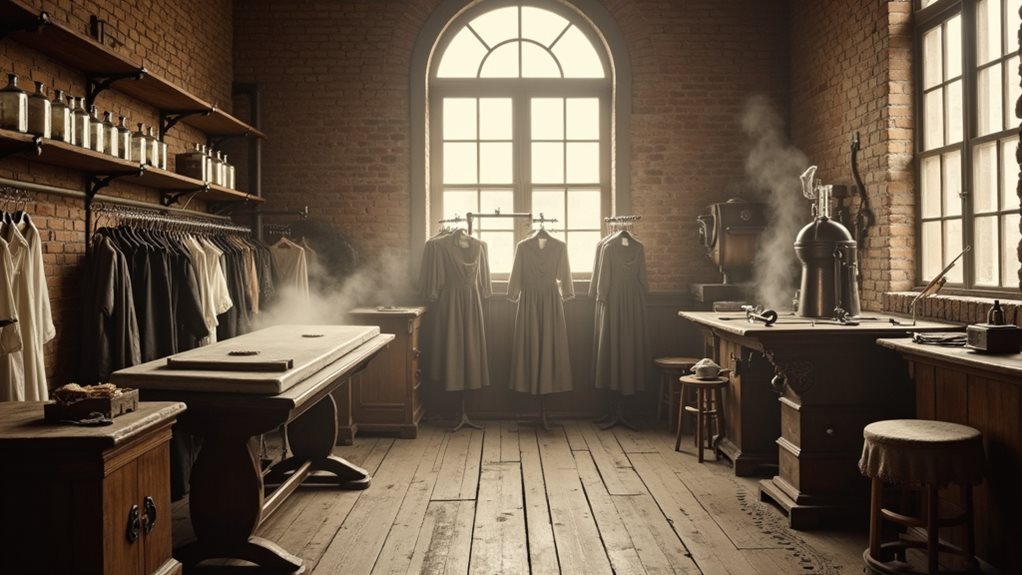
While most people think dry cleaning is a relatively modern invention, you’d be surprised to learn that its roots stretch back to 1821, when Thomas L. Jennings revolutionized fabric care forever.
This remarkable man became the first African American patent holder in U.S. history, earning his patent for a groundbreaking method called “dry scouring” – fundamentally the grandfather of today’s dry cleaning process.
Jennings’ chemical-based approach cleaned delicate garments without water, which was honestly genius considering how limited cleaning options were back then.
His patent didn’t just protect an invention; it opened doors for an entire industry while breaking noteworthy social barriers.
Jennings’ groundbreaking patent launched an entire industry while simultaneously shattering racial barriers in American innovation and entrepreneurship.
You’re looking at someone who literally changed how we care for our clothes, proving that innovation knows no boundaries and that one person’s creativity can transform everyday life for generations.
Today’s dry cleaning process still follows Jennings’ core principle of using chemical solvents instead of water to safely clean delicate fabrics and remove stubborn stains.
The Shift From Petroleum to Chlorinated Solvents
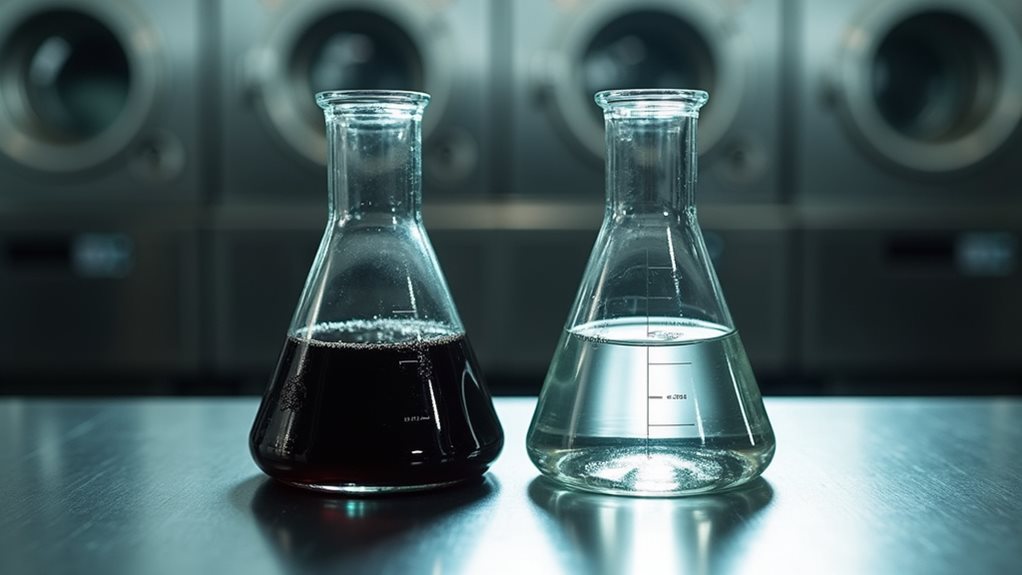
Jennings’ brilliant innovation sparked decades of evolution in dry cleaning chemistry, and by the early 1900s, the industry faced a burning problem – literally.
You see, petroleum-based solvents were incredibly flammable, turning dry cleaners into potential fire traps that made insurance companies nervous and city planners even more so.
After World War I brought new chemical innovations, smart entrepreneurs discovered that chlorinated solvents like carbon tetrachloride offered a safer alternative, though they’d later learn these weren’t exactly health-friendly either 😅.
By the 1930s, perchloroethylene became the golden standard, combining non-flammability with superior cleaning power that could tackle even your most stubborn oil stains.
However, this chemical solvent brought its own concerns, as PERC residues can remain on freshly cleaned garments and pose potential health risks including skin irritation and respiratory issues.
This shift allowed dry cleaners to return to busy urban centers, transforming the industry’s accessibility and growth potential.
Perchloroethylene Becomes the Industry Standard
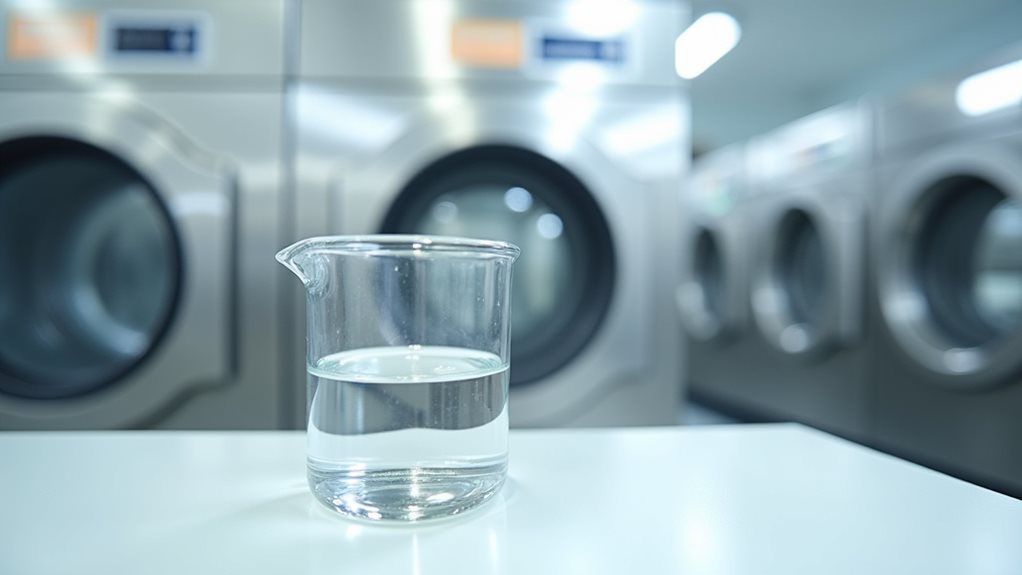
Once perchloroethylene hit the scene in the mid-1930s, it didn’t just become popular – it absolutely dominated the dry cleaning world like that one friend who somehow makes every group decision 😄.
You’ve got to understand, this wasn’t just another cleaning chemical – PCE revolutionized everything because it combined the best of both worlds: powerful stain removal without the fire hazards that plagued earlier petroleum solvents.
The dry cleaning industry welcomed this effective cleaning solvent for good reason. PCE could tackle oil-based stains that would laugh in the face of water-based cleaning, and it worked beautifully with delicate fabrics like silk and wool.
Its exceptional ability to dissolve oils and greases without damaging delicate fabrics made it the go-to choice for dry cleaning establishments worldwide.
Health and Environmental Concerns Emerge

Despite PCE’s incredible success in transforming the dry cleaning industry, something troubling began surfacing in the scientific community during the 1980s and 1990s – researchers were discovering that this miracle solvent wasn’t quite as harmless as everyone had believed.
You’d think we would’ve learned from TCE’s earlier problems, but here we were again, facing serious health concerns about another widely-used chemical.
California took the bold step of classifying PCE as a probable carcinogen in 1991, which honestly sent shockwaves through an industry where over 85% of cleaners still relied on it by 2011.
These mounting environmental concerns pushed the state to announce a complete ban by 2023, forcing you and the entire industry to finally adopt alternative solvents that prioritize safety over convenience.
The health risks extended beyond just cancer concerns, as studies revealed that PCE exposure could also lead to neurological problems and reproductive issues through inhalation or direct skin contact.
Modern Eco-Friendly Alternatives and Green Solvents
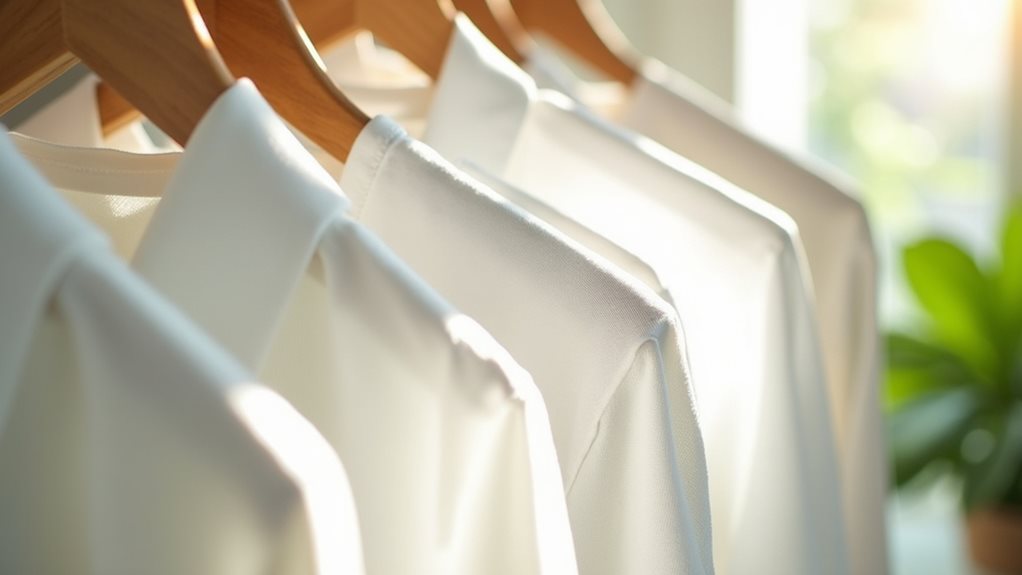
As the dry cleaning industry grappled with PCE’s health risks and looming bans, you started seeing a fascinating wave of innovation sweep through neighborhood cleaners.
With forward-thinking business owners embracing everything from liquid silicone to supercritical CO2 – and honestly, some of these new methods sound like they belong in a science fiction novel rather than your local strip mall.
These modern eco-friendly alternatives aren’t just marketing gimmicks; they’re genuinely reducing environmental impacts while keeping your favorite blazer looking sharp.
Green dry cleaning technology delivers real environmental benefits without compromising the quality care your clothes deserve.
Hydrocarbon solvents now represent about 20-25% of the market, proving that green solvents can compete effectively.
Smart entrepreneurs have also invested in closed-loop systems that recycle cleaning solutions, which means less waste and lower costs – a win-win that’d make any business owner smile 😊.
Wet cleaning processes using biodegradable detergents and specialized equipment have emerged as another sustainable alternative that eliminates harmful chemical solvents entirely.
Today’s Dry Cleaning Technology and Practices
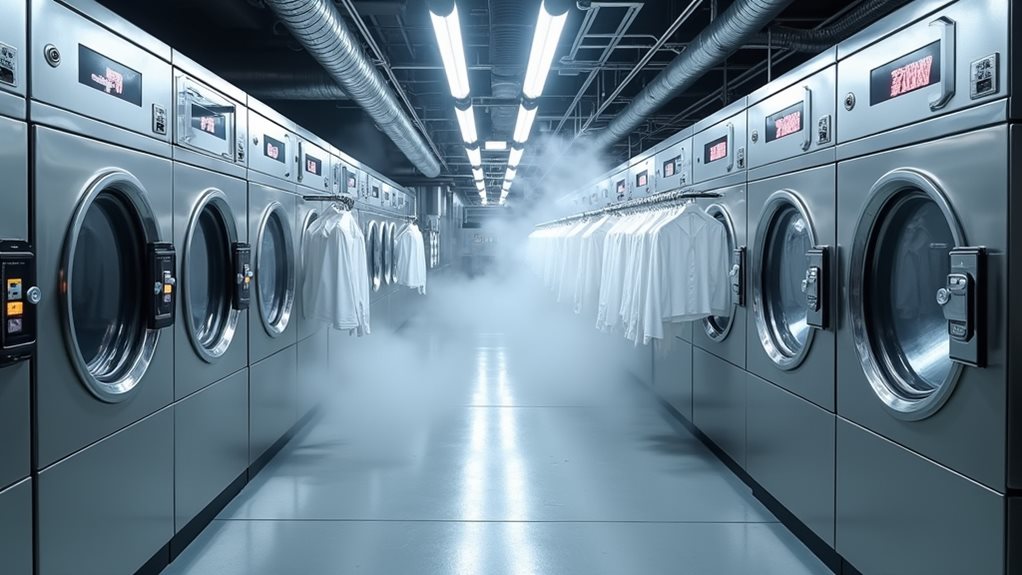
When you walk into a modern dry cleaning shop today, you’re witnessing the culmination of nearly two centuries of chemical innovation, where sophisticated machines hum quietly behind the counter, operating with the precision of a Swiss watch and the environmental consciousness that our great-grandparents never could have imagined.
These dry cleaning machines feature closed-loop designs that capture every drop of solvent, making solvent recovery an art form that would’ve seemed like magic to early cleaners.
You’ll find businesses embracing eco-friendly alternatives like supercritical CO2, which sounds fancy but simply means using pressurized carbon dioxide to clean your clothes without harsh chemicals.
While perchloroethylene remains the most commonly used dry cleaning solvent, the industry is gradually shifting toward safer alternatives like hydrocarbon-based cleaners and liquid silicone that provide the same effective stain removal without the environmental and health concerns.
Safety sensors and lockout devices protect workers, while the industry’s $8 billion value reflects how we’ve perfected this vital service.


